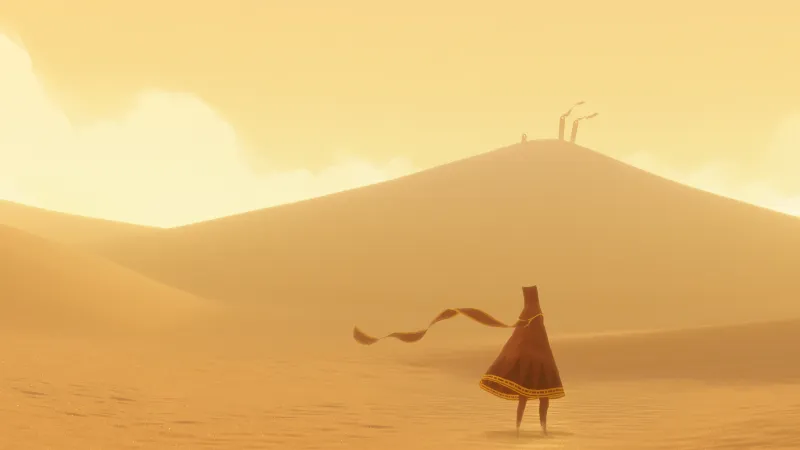
On March 13, 2012, 10 years ago to the date, thatgamecompany released Journey, quickly called one of the greatest games of all time. Its quiet, meditative approach to gameplay and emphasis on multiplayer that promotes connection rather than competition was, for the time, especially novel. The game accrued a massive fan base, countless awards, and recognition from not only the game industry but the art world at large.
More personally, it completely changed composer Austin Wintory's life. Nowadays, he's one of the more recognizable names in video game soundtracks. Though it wasn't his first job, or even his first time working with Thatgamecompany (he composed the soundtrack to the studio's first commercial game, Flow), it was the project that put him on the map. Since then, he's composed for the Assassin's Creed series, The Order: 1886, dozens of films, and many, many more.
And according to Wintory himself, he owes it all to Journey.
In celebration of the game's 10th anniversary, today, Wintory released a re-recorded, re-imagined version of Journey's soundtrack recorded with the London Symphony Orchestra, the London Voice choir, and cellist Tina Guo – who played on the original soundtrack.
To learn about revisiting one of his most recognizable works a decade later, we spent time speaking with Wintory, getting an in-depth view into the creative process behind this project.
This interview has been edited and condensed for clarity.
Game Informer: How did you start brainstorming, like, "I want to re-record Journey's original soundtrack?"
Austin Wintory: I don't mean to say it this way, but it's like I can't escape it. But I don't want that to sound like that's a problem. I feel so lucky that I have had one thing in my career that is just seemingly nonstop of interest to people. You know, a lot of composers could go their whole career – even very successfully – and never have something that quite strikes a nerve with people in that way. And I give all credit to the game for that. The music, I think, is one of those where I just tried to stick to what the game offered, and then was lucky enough that people liked the music on its own. But I think the game is the reason why I get that attention.
So, all of that said, because Journey is always around in some way or another and involved in conversations, I found myself thinking maybe seven months ago [...] "The tenth anniversary of the game is coming, and I ought to do something about that." If nothing else, I want to signal to the world my gratitude [for] the fact that the world seems to care about this album and this score and this game. So, what can I do that would offer something interesting or fun? I found myself trying to think of what I might do. And then a few things sort of converged.
Click here to watch embedded media
[The London Symphony Orchestra] actually reached out to me a number of years ago and said, "If you ever have something, here's how to reach us. We're interested in finding a chance to work together." I record in London all the time, but I usually don't record traditional orchestra. You look at a game like Assassin's Creed Syndicate, we did all that at Abbey Road, but it was with a small chamber group very purposefully chosen of, like, three violins, three violas. You know, a tiny group that's very kind of visceral and close. Or Abzû we recorded there. We recorded choir. I did a room of all harps. These are not traditional orchestra, though. So, I was like, "I don't really do traditional orchestra very often." I did that growing up, and I loved it and it feels so old-fashioned. Even though I love that kind of music, I don't tend to find myself writing that so much. Or if I do, it's modified somehow.
And so, I really wanted to work with them, and they seemed open to working with me, but I couldn't think of the right thing. With that in the back of my head, about six months ago, it dawned on me [Journey's 10th anniversary was coming up]. "What if I kind of merged these two threads and were to do a London Symphony re-imagining of the score?" And then, right as I was trying to search for the words for what I was trying to achieve [...] somebody tagged me on Twitter and gave me the most perfect succinct description of what I was doing. They knew better than I did what I was trying to achieve. So, I have to credit this Twitter [user]. I don't even remember their Twitter handle. They tagged me in a tweet. They were responding to somebody else, but they effectively said, Journey is their number one pick for if they could go back in time and experience something for the first time again. The idea that, If I could erase my memory and Men In Black de-neuralize – or neuralize, I guess – and have the feeling of this thing that meant so much to [me], and yet it's new again.
So, this project gave me the chance to, of course, not do that. But to do something that's as close as, I think, we can get to that. That's my goal. I don't know if I achieved that. But the aspiration is, for people who really care about this music – and if there's even one person in the world, consider me grateful – hopefully, this gives them a chance to have that feeling of, "This is familiar, and yet I haven't heard this. I don't know this version of it." That became the guiding light. "How do I offer up a thing that doesn't just rehash it. It takes the opportunity to offer up something new."
GI: When we jumped on the call, we were talking about how there are a lot more electronic elements in the original soundtrack. How did you transpose that into something that now utilizes a full orchestra?
A: I mean, I don't know if I have a good sort of, "I just did X and Y and that took care of it." It was a lot of exploring and experimenting and being very frustrated [laughs]. Because the original kind of borders on new age music until the very end. It's very meditative. The electronics are very smooth. Other than a few little key sections, like the [sand] surfing section that we call "Road of Trials" and whatnot, it's pretty inward-looking and deliberately low-key, right?
 Austin Wintory
Austin Wintory
So, I thought, "Okay, if that's a new age album, how do I do something that's almost more like a Joe Hisaishi [Castle in the Sky, Spirited Away] album?" Where it uses the orchestra in a very expressive and colorful way. And what was before a single note being held by a synthesizer might now be a note that swims around in flutes and french horns and violas. It's the same note, but I'm passing it around so that it feels like the original is almost grayscale, and now it's bursting with color. Hopefully. We'll see if it feels like that to anybody else. But that was the goal.
As you might imagine, it became really easy to overdo it, and suddenly it stopped feeling like Journey. I would get all excited and I would work on something, and I'd be like, "Oh! I can do this!" And it would become this thing where the orchestra – especially the size orchestra we had, which was gigantic – it's really easy to kind of unleash the fireworks. It's very tempting because it's so fun. It's so satisfying, you know? When you listen to just absolutely off-the-hook rambunctious orchestral forces marshaling together, there's no thrill quite like that for me. But that's not really what Journey is. So, then it became, "Okay, how quiet can I keep this?" Because this is over a hundred musicians, and if I can make them all play together generally on the quiet side, that's its own thrill.
GI: Any creative at all, like, even your magnum opus will have one or two things in it that you're like, "Ah, I would do that differently." Was there anything from Journey that sat with you for 10 years, and this was the opportunity to be like, "I'm changing that thing right there?"
A: The funny thing is, I had to resist the temptation, because once you start doing that kind of thing constantly, all these little changes that might be imperceptible start to really aggregate, and it really starts to feel very different. That could be a problem. So, I had to kind of reel myself in and say, "You know, I was 24 when I started writing Journey. I'm 37 now." I'm a pretty different composer than I was then – hopefully a better one. I see things, though, more clearly than I did then. There's a certain innocence of my confusion that I think is part of what makes Journey what it is. So, I didn't wanna sacrifice that. I didn't wanna make it something that it wasn't. Which meant I had to kind of pick those moments where I sneak in slightly more, dare I say, sophisticated things.
But then there's also things that are more obvious. For example, the really big one, on the final song, "I Was Born For this," in the original, I worked with this absolutely spectacularly amazing singer named Lisbeth Scott. She is a legend. One of my favorite bragging points about her is that John Williams wrote a solo for her personally for the Spielberg movie Munich that is one of the most haunting things I've ever heard in a movie. Around that same time, she also was the singing princess in Shrek when the bird and the princess are singing higher and higher and higher and the bird explodes. The voice of the princess in that moment is Lisbeth. She's in a million soundtrack recordings, and she writes her own scores. I had worked with her. I worshiped her. And I hired her to sing "I Was Born For This." Well, "I Was Born For This" is written in five languages. It's in Latin, French – and technically not modern French, because it's Joan of Arc, so it's more like Middle French, but it's effectively French – Middle English, which is not the same thing as modern English at all, it's a fully different language [...] Japanese and Greek. Ancient Greek.
Click here to watch embedded media
I've always thought, "How cool would it be to have each language represented by somebody for whom that language is native?" That was always one of [the things in the] back of my head. "If I ever redo this piece, it would be fun to do that." Now, three of the five languages are not modern languages, so it's really just the Japanese and the French that I can do the pure version of this. But I was able to get a Russian singer for the Latin section, and I was able to get a fabulous French singer, a Greek Singer, a Japanese singer, and then [...] I have a friend who's from Mexico who I've worked with a million times and I just always look for more excuses to collaborate with. I told her, "You get to do the Beowulf Middle English because there's nobody that speaks that anyway." She's just a superb singer, anyway. When the final verse comes in and we get this kind of big powerful statement of the main theme set to the words [of] Joan of Arc, her final words before she died, "Do not grieve for me, for I was born for this," I just reached out to a bunch of people that I've either worked with for years and love working with or I've always wanted to work with. So, all told, there's 11 singers that all pile on top of each other for the finale of "I Was Born For This."
It's as much a reflection of the road I've taken. I've met all these people over the last 10 years precisely because of what Journey enabled about my career. I crossed paths with all these amazing talents just because of where my career has taken me in those 10 years. It seemed like a fun way to bring it all back home, and say, "I would never have met you if I hadn't worked on this. So, now let's work on this together." That's a big change.
GI: Are Sony and thatgamecompany involved with this?
A: Jenova [Chen, co-founder of thatgamecompany] and I talk fairly regularly. I told him I was going to do this, and he seemed to be excited about it. As you can imagine, I don't know how closely you follow their current game, Sky, but it's massive. So, he's just 24/7 busy with Sky. So, it was kinda like, "Oh, that sounds really cool! Let me know how it goes." I invited him to London. I said, "If you wanna come and hang out while we rerecord the orchestra, it would be genuinely an honor to have you there." He was, like, 10 days away from his wife giving birth to their second kid, so he said, "I suspect I will not be able to come to London." And so, he knows about it and was excited about it.
And Sony, similarly, they were not involved in any creative or pragmatic ways. But of course, I let them know that I was doing it. They've always been very supportive of all my shenanigans. I've conducted the music live, and I've made alternate versions of some of the tracks that work better for live performances, and they've always been supportive of that.
GI: So, does that mean – were you self-funding this whole thing?
A: I did [laughs]. Yeah. I and a friend [Ready At Dawn co-founder Andrea Pessino]. Originally, I was dreaming of a more scaled-down version. As I let my imagination run wild with it, I found myself thinking, "This is starting to get to a place financially that is a bit far of a reach."
[Andrea] basically said, "How can I be involved?" So, we came out to London. I solicited his feedback throughout the whole process. He's the co-founder of Ready At Dawn and also their chief technology officer. The engine that The Order [1886] runs in, he basically built himself. So, he's this engineer and programming savant. I mean, he's just this genius. But he's also this deeply intuitive and talented musician. [He was a] conservatory student growing up in Italy as a kid – essentially a child prodigy pianist. He could have easily had a career in music but chose something very different. [...] So, he always wanted to be more involved in music, and basically, the idea was, "Well, what if we produce this album together?" So, that meant we shared the costs, but also he was a creative confidant for me, and a sounding board, and attended the recording sessions, and helped every step of the way. I'm eternally grateful for it. It would've been something different if he hadn't been part of it.
GI: How many musicians played on the original soundtrack?
A: Maybe 22, 23 players max? Basically, it caps out around or just shy of probably 30 musicians on the original score.
GI: So, the jump up to the new soundtrack is adding 70 people, basically?
A: About 100. I think it's, all told, over 130 total musicians. Because we had a 91-piece orchestra and a 32-voice choir. And then something like 11 singers?
[In the song "I Was Born For This," there is] a big moment where the orchestra builds, and then you hear just two violins alone going right before the big climax and the Japanese section begins. That's actually a separate musician. A violinist who lives in the Detroit area named Taylor Davis, who's a big YouTuber who I've worked with many times over the years. She was, like, the featured star soloist of the Banner Saga trilogy that I worked on, and just one of my favorite people. We've done live shows together, and I just adore her.
 Journey
Journey
The reason we met is she did one of the most amazing Journey covers that anyone has ever done. There's this great video on YouTube where she's playing in the sand dunes, and then in the snow, in a full Journey costume, playing her violin. [She] does this absolutely amazing thing. When that came out, it was the first time I had seen somebody go to that length – with a full music video and everything – of my work. And so, I reached out to her and said, "I can't believe you did this," and we've been friends ever since. She did an amazing music video when Assassin's Creed Syndicate came out with another musician. So, I said, "I have to find somewhere for Taylor to be involved in this. So, there's a little bit in "I Was Born For This," as well.
So yeah, all told, I haven't actually done the count, but whatever that is. It's somewhere in that neighborhood.
GI: It's a huge jump regardless.
A: It's a completely different animal, yeah. 135 or so.
GI: On the tracks, is that all of them playing together? Like, live tracking 135 people? Or did you do it in chunks?
A: Almost. The orchestra is always playing together. But the choir was done on a separate day. And there's a lot of reasons for that, but honestly, the main one was Covid [laughs]. It was daunting enough to record 91 musicians right as [the Omicron variant] was starting to appear in London. We had to do daily testing. Everyone in the orchestra, obviously, not only had to test, but if anybody had somebody show up at home that tested positive, even if their test was negative, they would switch out the musician for a backup on the day. That kind of thing.
The recording studio that we were in, which is the recording studio that the London symphony owns, it's a converted 18th-century church in the middle of central London that they bought and retrofitted as their primary recording studio and rehearsal space for when they give concerts [...] when they go on tour, we recorded there. It's sort of their home territory.
The room, you could fit the choir in there if you really wanted to jam it in. But we would've been really tempting fate in a way that would've essentially been unethical to jam that many together. Also, when you're recording, the more instruments you get into the room, the more you lose control of your ability to mix it afterward. Because now it's just like, "Whatever happens in the room is whatever you get." You can imagine, like, if the mix is placing the listener's ear somewhere, you can kind of move the ears around a little bit when you've got a huge number together. But you can't do things, like, "Oh, the french horn is too loud, let's bring them down," because they're going to be filtering into every microphone in the room a little bit. So, the only way to bring them down is to bring the whole thing down. And so, this is partly why a lot of times on video games and on films, you'll often record things in smaller portions, so that you have maximum control, and you don't have to just have a master volume ride up and down. But for this kind of thing, I thought, "It would be just so heavenly to do it the old-fashioned way."
GI: You're recording this for the 10th anniversary of Journey. What do you think will be the stories and anecdotes from this process that are going to stand out to you 10 years from today?
A: Oh man, that's a great question. I also just realized that, of all the people to leave off that initial list, this is the most horrifying and embarrassing, but Tina Guo, of course, comes back and plays the cello solos again. We recorded her at Capitol Records here in Los Angeles, so she was also separate from the orchestra. It's blasphemy to not mention her because she's the heart and soul of it. Although, I did change the cello's relationship to the music.
In any case, the reason that triggered is because that was the first thing I thought of, is going into the studio with her. You know, she and I have known each other now [for] about 15 years. We started working on Journey together 13 years ago. It came out 10 years ago. It was a big launching pad for both of us. You know, she's now one of the busiest musicians, probably, on the planet. Not just because of Journey. In fact, Journey probably least so at this point. I mean, my God, she's a featured soloist on Dune and a million other things that signal boost her quite effectively. But there's something very nostalgic about it and she and I.
When I'm recording, obviously, I do this as a profession, so I tend to go into a little bit of a battle mode. Now, I'm very cavalier, and I joke around. I tell jokes all the time. The first day with the London Symphony, I tell all my jokes, and they're being very typically stoic British people and having a very stiff upper lip with me about my jokes. But by the second day, they warmed up to me, and we were enjoying each other. We were being more jokey, as I tend to be, and very irreverent. Just having fun! Because I say, "Look, we're making music! How crazy is this? Our job today is to walk away with something that hopefully just sounds beautiful. Some people have dangerous jobs, or very grueling jobs, or very boring jobs. And this today is our job, so f-----g hell, let's enjoy it. Let's make sure it's fun, and it doesn't feel overly serious." But, that said, if you're not serious enough, you're gonna fall behind schedule, and then you're going to have an incomplete project. Because it's not like you can just record as much as you want and run the clock 'til midnight. This stuff gets pretty pricey [laughs].
Click here to watch embedded media
So, I tend to be very, very particular, and I plan things very anally and all that. Nonetheless, I knew we would probably have a little extra time, which means we could probably take our time, and I wanted to end with "Apotheosis." I just thought that piece, that seven minutes and change, completely and totally changed my life. It just feels so fitting to bring this almost spiritual experience of a recording session to a close with that one. And as focused and warrior mode as I can get while I'm working – despite the joking – when we first recorded it, we do what's called a sight-read. Which is like a rehearsal. Sight-read means they have not practiced this. They are reading the music by sight for the first time, the first playthrough. There wasn't a rehearsal the day before or something like that. You go into the studio, they look at the music, they give it a quick glance, and they [go], "Okay. Ready." And they can play it almost perfectly the first time. It is sorcery. It shouldn't be possible. Especially because as minimalistic as a lot of Journey can be, it's actually not the easiest music to play. Particularly "Apotheosis." [...] They're not playing random notes; it's a very specific thing they have to play. If they play a wrong note, everyone can hear it.
And so, it's not hard, but it's not easy. Of course, the goal is not just to get it right. The goal is to make it sing. The goal is to make it feel expressive and beautiful as if they've been working on it and practicing it their whole life. So, it's my job as a conductor to really set them up for that. Part of what we do is say, "Let's just read it down, top to bottom." It's like a table read for actors on a TV show. "Let's just read around the table. You don't have to worry about being in character yet. You don't have to worry about, like, what's your body language gonna be. We just wanna know what the words taste like, and then we'll start to piece it together." We do a thing very similar in a recording session. So, I said, "Let's just run through it and read it." Because "Apotheosis" ends with this long, high cello solo of Tina's, where she's playing as the character's walking into the light. Spoiler alert.
GI: I've played it, don't worry.
A: Yeah, I suspected you did. So, I ask the principal cellist of the London Symphony, "For now, that part will be recorded in Los Angeles when I come back home. But, so that the rest of the orchestra will know what we'll be missing, will you play it? Just for now, for our first time through." So, he has to sight-read this really high and delicate [part]. You know, cello is a low instrument, and [this is a] really high-end part. Tina, that's one of her specialties; she can play up where the violins play because she's just a monster. But cellists, that's not a normal skill in cello. But of course, these are the world-class cellists, so they can all handle it, too.
So, we just read it down. All seven and a half minutes of all this music, they played it very nearly perfectly from start to finish, including Tina's solos as a placeholder. I absolutely felt my eyes well up while I was conducting. It's not that I broke down in tears, but it was overwhelming. It's not that I react to the piece the way someone else might, and get moved by it because I'm too aware of what it took to make it. But the piece's become – it's like this old friend. It's like if you see a friend from college that you used to spend all day every day with and you stay in touch, but you haven't seen each other in a long time.
So, all that came together at once, of this old friend visiting for the first time in years, and just knowing how much I've missed this experience. It was overwhelming. I'll never forget it. [...] I'm conducting the London f------g Symphony Orchestra on this piece that changed my life, and we're making music together, and this is incredible, and I'm in one of my favorite cities in the world. I just can't fathom that any of this is real, and this is somehow my life. It really got me in that moment. All that stacking on top. I became very emotional. I'll never forget that.
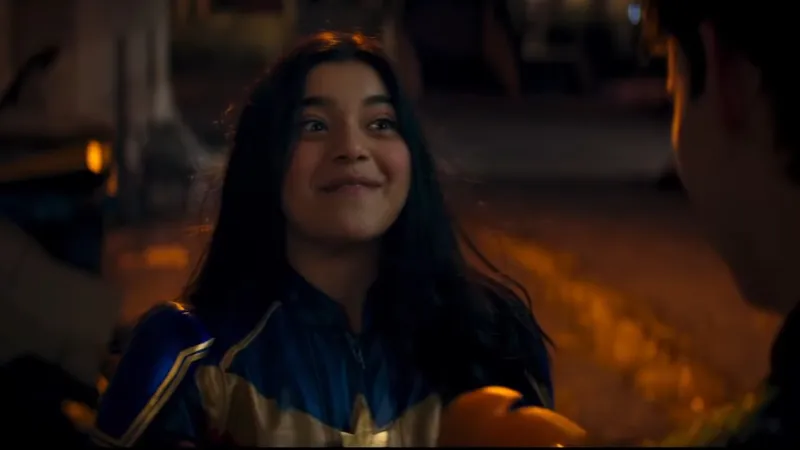
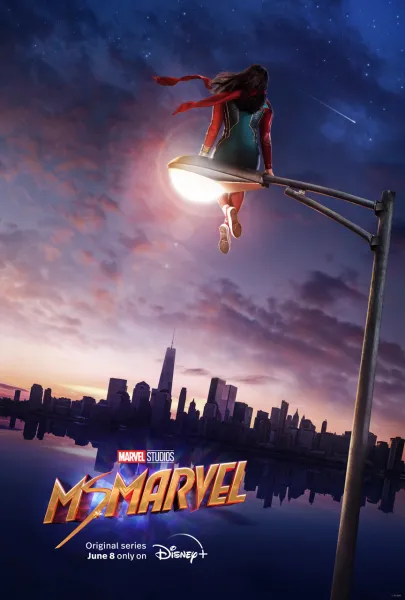
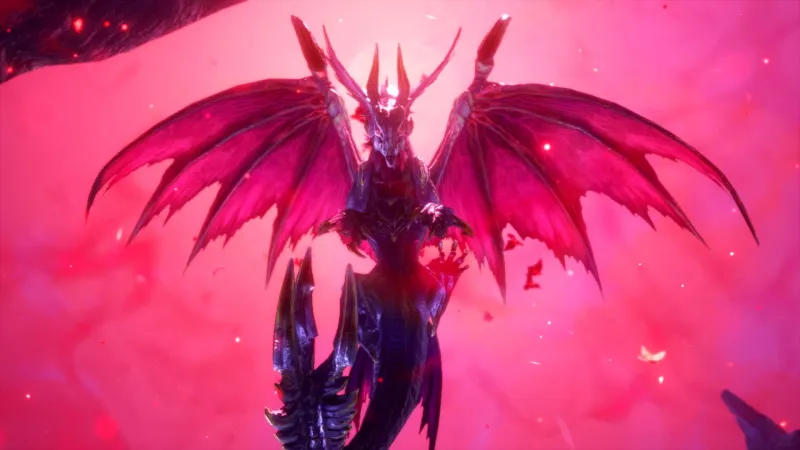
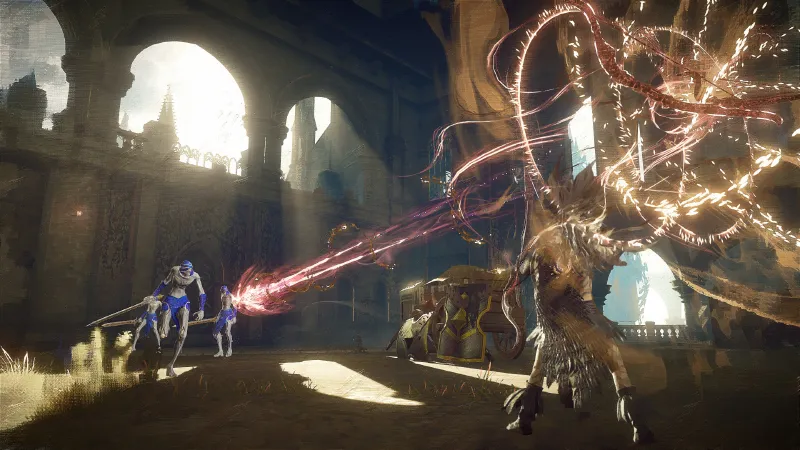

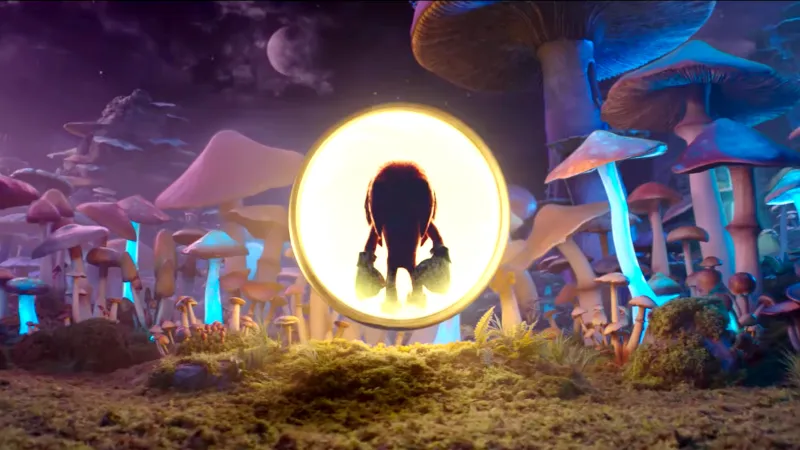
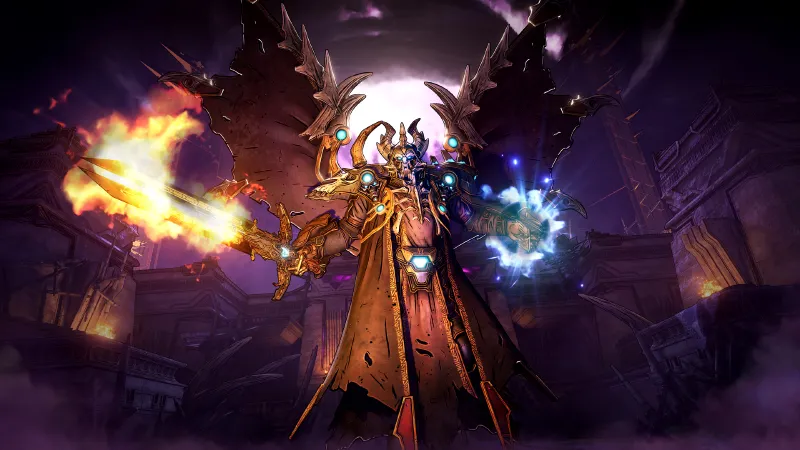
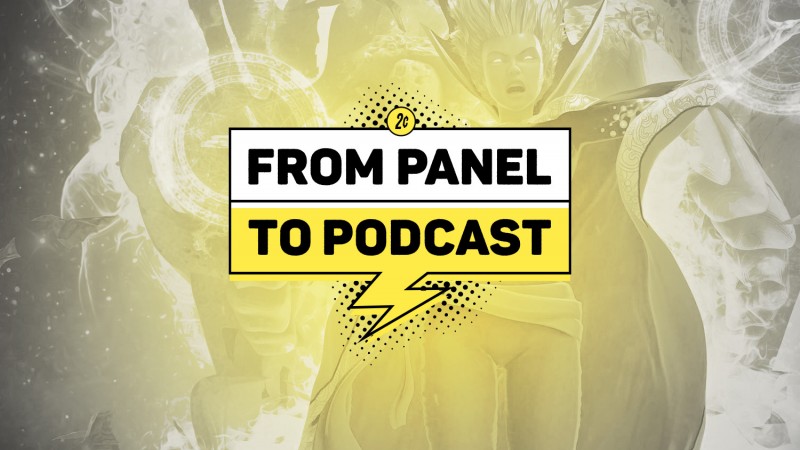
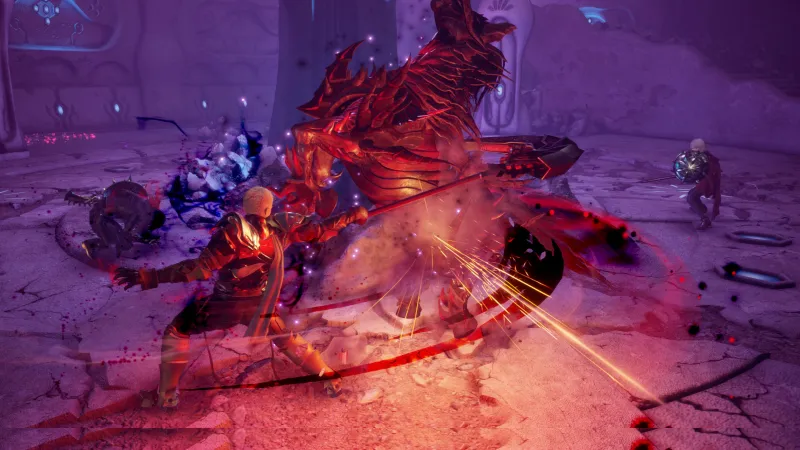
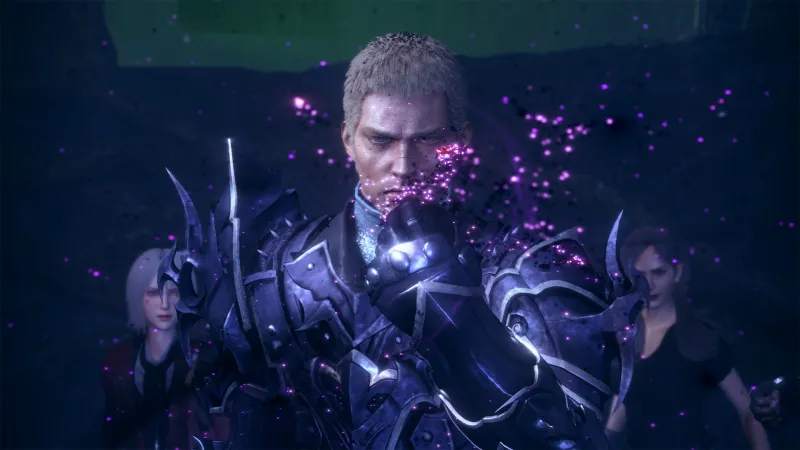
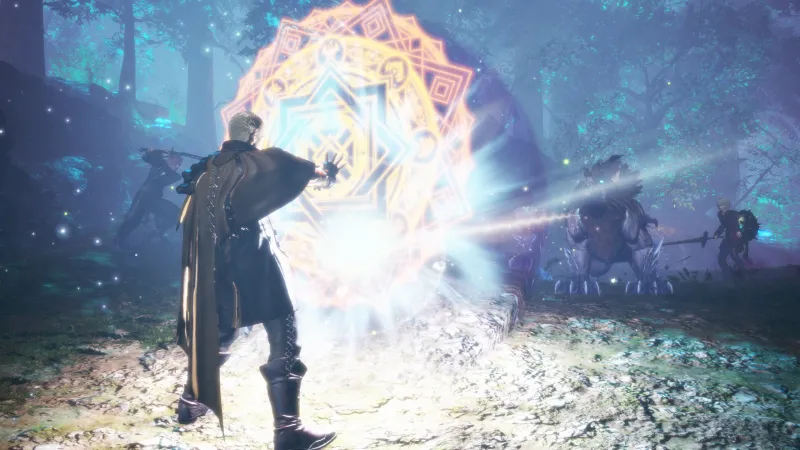
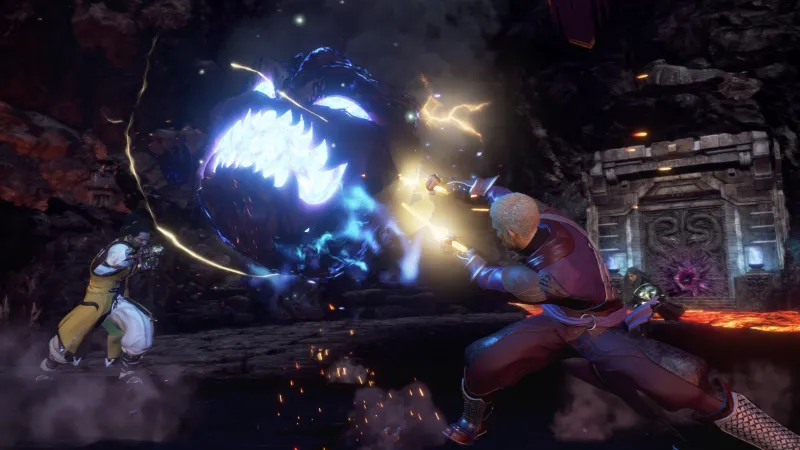

 Austin Wintory
Austin Wintory Journey
Journey